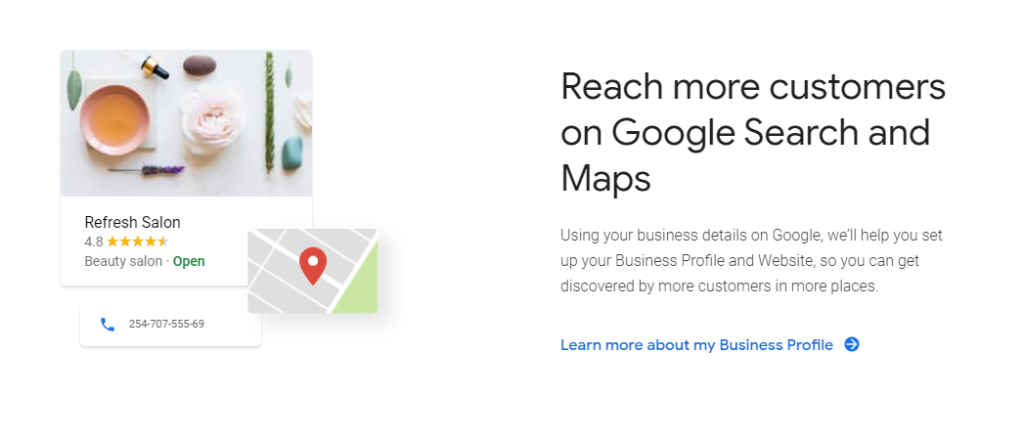Is it a surprise that the tech giant, Google, decided to throw its weight on website building? By all means, it is not this is because you can find their footprint on everything to do with the internet. And now Google Sitebuilder.

They have a stake in emails up to social media. Remember the Google+? Though it was phased out, at least it made its presence felt.
Back to our topic.
Just right off the pat, you’d expect that since Google is a billion-dollar company, it would do a great job and give a website builder we can depend on. Think things like SEO, themes, and freedom to customize.
Google Sitebuilder falls short in every aspect of what we just mentioned.
As if that’s not terrible already, Google introduced another version of the site builder. Meaning they now have two: Classic and New site tools.
The problem comes when you realize that the old one, Classic sitebuilder, though terrible tool by itself, is better than the New tool.
With the new Google Sitebuilder, there is nothing much you can do.
Ideally, Classic Google Sites leverages templates to create websites. On the flip side, New Google Sites no longer support templates. Instead, they introduced themes.
With that said, let’s look into what each of them entails.
Classic Google Sitebuilder
Google announced the launch of this builder back in 2006 after a successful acquisition of JotSpot, an enterprise software company.
After the acquisition, Google moved its existing tool, Google Page Creator, and integrated it with the newcomer. And that is how Classic Sites was born.
The main mission of the builder is to help people build websites without outside help – think project wikis, project trackers, customer documentation, and others. That is what Classic sites do best.
The New Google Sitebuilder
In 2016, Google decided to shake things up. Revamping of the Classic tool took place. This happened because of two reasons:
- Google wanted the site builder to align with other of its tool
- Introduce additional site capabilities Classic Sites was lacking.
In the end, the New Google Sitebuilder looked a lot cooler than its predecessor. But there was one big problem.
It is severely restricted. And there is nothing much you can do with it.
Features and benefits of Google Sitebuilder

Let’s take a peek into what makes this website creator tick and why you should pay attention.
#1. Adding Google Gadgets
You can easily add gadgets like PayPal buttons to your website using the Classic Sites tool. Just click on the More Gadgets button.
On the other hand, to accomplish that when using the New Google Sitebuilder, first generate the button embed code on PayPal. On your website, use the ‘embed code’ widget to display the button.
#2. Plenty of Layout Options
With the New Google Sites, no need to create your own website layout. You have access to over six different layouts with drag-and-drop capabilities.
As such, you can play around with the layouts to come up with something unique and beautiful.
#3. Access to stock images
Google allows you to easily search images directly from the website builder. It even goes one step ahead and sorts through the images and only display ones licensed for reuse.
This way, you are sure you won’t run into copyright issues.
#4. Drag-and-drop editor
Google site builder hasn’t been left behind. Like other site creation tools like OLITT, they allow users to drag elements and drop them anywhere they want.
This feature allows you to drag blocks around the page until you achieve the best look.
#5. Simple and Accessible Website Building tools
It is true Classic Google sites is a little bit inaccessible, there is no doubt Google sitebuilder is simple to use.
The new version has stripped the website creation process to only the essentials. As such, you won’t be spending much time overthinking stuff instead of actually creating.
#6. Seamlessly integrates with Google’s products
You only need the Gmail account to gain access to Google website builder.
Additionally, you can connect the site with other tools like YouTube, Google Drive, Google Maps, and Google My Business among others.
For this reason, you can get much done without leaving the website.
Google Sites Pricing
Luckily, Google Sitebuilder is free to use. As a standard Google user, you can create as many websites as you want. But there is a catch.
By default, the domain name is from Google. As such, the site name will be something like site.google.com/yousite.
But if you need a custom domain, all is not lost.
All you have to do is subscribe to the G Suite plan starting at $6 to $25 per month per user and get a custom domain.
Google sitebuilder best alternatives
Here are some options you can check out:
- OLITT– perfect for building online shops and blogs because of its advanced security and page loading technology
- Weebly – they provide intuitive websites and hosting services
- WIX – helps build advanced websites without the need for coding knowledge
- Joomla – perfect tech-savvy individuals who want to build sites with password-protected content
Final thoughts on Google website builder
This may not be something you are looking for, but it is the one you need, especially when starting out.
It is simple and straight forward. You don’t need technical know-how to build a website.
Frequently Asked Questions
#1. How can I create a website on Google?
Follow these steps to create a website on Google:
- Go to your browser and open new Google Sites.
- Once open, locate the ‘Create’ button In the bottom right
- At the top left, click the Untitled Site to change the name of your website.
- Type the name of your site and then press Enter.
- Time to add content to your new website.
- Review the changes and if impressed, click Publish at the top right\
That is how to create a free website on Google.
#2. How much does Google Site cost?
You are in luck because Google Site costs nothing. It is free to use and you can create unlimited websites for free. However, by default, the domain name is set to google.com. Something like site.google.com/yoursite. But if you need a custom domain, just sign up for the G Suite plan starting from $6 to get a domain name.
#3. Can Google host my website?
Google doesn’t directly provide web hosting services. However, they make it easy for you to choose the best hosting option for you. This way, you can focus on improving your web presence.

